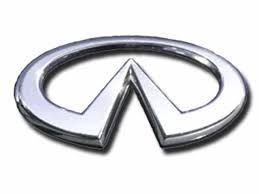M35x AWD V6-3.5L (VQ35DE) (2007)
/Page-55006.png)
-
System warning operation
AFS off indicator lamp illuminates at intervals of approximately one second when AFS control unit detects any specific DTC (diagnosis trouble
code), or when unified meter and A/C amp. cannot receive AFS off indicator signals.
NOTE: Unified meter and A/C amp. transmits a command to combination meter to blink AFS off indicator lamp when they cannot receive AFS
off indicator signal.
SWIVEL ACTUATOR INITIALIZATION
AFS control unit performs swivel operation to initialize swivel actuator when start of the engine is detected. Straight-ahead position of low beam
headlamps is adjusted by turning low beam headlamps to outside vehicle with specified swivel angle after turning it to the center of vehicle and making
sure that it reaches the stopper.
Swivel actuator initialization shall be performed every time when start of the engine is detected.
HEADLAMP AUTO AIMING OPERATION
The height sensor detects a change in height of rear vehicle with ignition switch ON, and transmits signals to the AFS control unit:
When ignition switch is turn to ON position, power is supplied
-
to height sensor terminal 1
-
through AFS control unit terminal 6.
When ignition switch is turned to ON position, height sensor input signal is supplied
-
to AFS control unit terminal 28
-
through height sensor terminal 2.
Ground is supplied
-
to height sensor terminal 3
-
through AFS control unit terminal 8.
Aiming motor driving signal (voltage signal that corresponds to the vehicle height) is transmitted depending on the height sensor signal at the start of the
engine
-
to front combination lamp LH terminal 12
-
through AFS control unit terminal 40,
-
to front combination lamp RH terminal 12
-
through AFS control unit terminal 19.
Output of aiming motor driving signal is maintained unless headlamp (HIGH/LOW) illuminate detected.
Auto aiming control operation starts when headlamps (HIGH/LOW) illuminate detected.
When headlamps (HIGH/LOW) illuminate, output of aiming motor driving signal is changed according to the height sensor signal. After the change, it is
changed according to height sensor signals with predetermined timing based on driving condition while headlamps are ON.
Auto Aiming Operation
AFS control unit starts outputting aiming motor drive signal when the engine starts, and continues to output it until the engine stops. Aiming motor drive
signal changes output when the specified conditions described
below are met.
Headlamp aiming motors set the low beam projectors according to aiming motor drive signals received from AFS control unit, both headlamp aiming
motors cause the low beam projectors to move to the position commanded by the signal.
The aiming motor drive signal level retains when the following conditions are not met.
-
AFS control unit operation when the vehicle is stopped (low beam headlamps illuminated)
Headlamp aiming motor drive signal is changed when vehicle height is stabilized with a parked condition, depending on the height sensor signal
detected with height sensor signal by AFS control unit.
-
AFS control unit operation when the vehicle is running (low beam headlamps illuminated)
When vehicle is running, headlamp aiming motor drive signal is changed depending on the height sensor signal which is detected when AFS
control unit detects constant steady speed of vehicle.
When the vehicle is accelerating or decelerating, AFS control unit keeps headlamp aiming motor drive signal voltage level rather than changing it,
so that the low beam projectors of both headlamps do not operate.
CAN COMMUNICATION SYSTEM DESCRIPTION
CAN (Controller Area Network) is a serial communication line for real time application. It is an on-vehicle multiplex communication line with high data
communication speed and excellent error detection ability. Many electronic control units are equipped onto a vehicle, and each control unit shares
information and links with other control units during operation (not independent). In CAN communication, control units are connected with 2
communication lines (CAN H line, CAN L line) allowing a high rate of information transmission with less wiring.
Each control unit transmits/receives data but selectively reads required data only.
